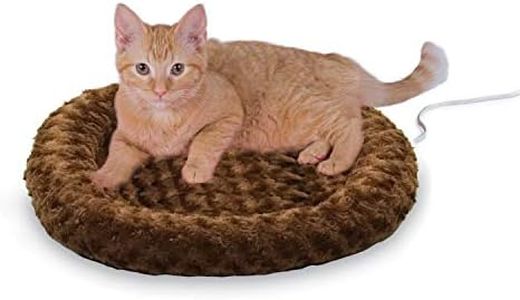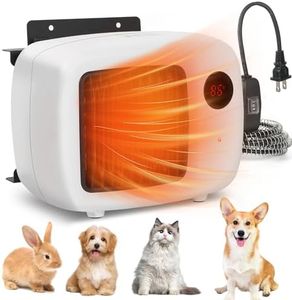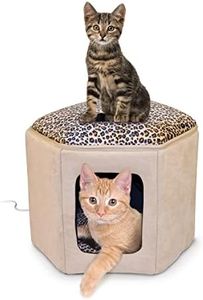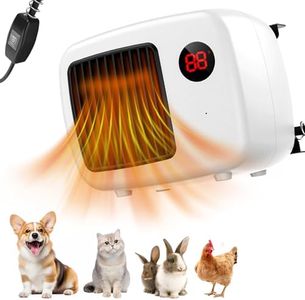We Use CookiesWe use cookies to enhance the security, performance,
functionality and for analytical and promotional activities. By continuing to browse this site you
are agreeing to our privacy policy
5 Best Doghouse Heaters
From leading brands and best sellers available on the web.Buying Guide for the Best Doghouse Heaters
Choosing the right doghouse heater is about ensuring your pet stays comfortable and safe during cold weather. The key is to balance warmth with safety, making sure the heater matches the size and type of your doghouse as well as your pet’s needs. Understanding the features and specifications of heaters will help you make the best choice for your furry friend’s comfort and protection.Heating Power (Wattage)Heating power, measured in watts, tells you how much warmth the heater can generate. This is important because a heater that is too weak won’t keep the doghouse warm, while one that is too strong might overheat the space. Small doghouses typically require lower wattage (around 50-100 watts), while larger ones may need higher wattage (up to 250 watts or more). When choosing the right wattage, consider the size of your doghouse and how cold your local climate gets. If you have a large or poorly insulated doghouse in a very cold area, opt for a higher wattage heater, but for a small or well-insulated space, a lower wattage model should suffice.
Safety FeaturesSafety features include things like automatic shut-off, overheat protection, and chew-resistant cords. These features are crucial to prevent accidents such as fires or electrical shocks. Heaters with automatic shut-off or thermostats will turn off when they reach a certain temperature, reducing the risk of overheating. Chew-resistant cords help prevent your pet from biting through wires. When picking a heater, always ensure it prioritizes your pet’s safety, especially if your dog is curious or tends to chew on objects.
Installation TypeInstallation type refers to how the heater is set up in the doghouse. Some heaters are designed to be mounted on walls or ceilings, while others are freestanding or mat-style heaters placed on the floor. Wall- or ceiling-mounted heaters save floor space and keep the device out of your pet’s reach, which is often safer. Floor mats provide a heated surface for your dog to lie on, offering direct warmth. Choose an installation type based on your dog’s behavior (for example, avoid floor units if your dog might chew or move them), the available space, and whether you want direct or ambient heating.
Temperature ControlTemperature control allows you to set or adjust how warm the doghouse gets. Some heaters have adjustable thermostats or variable settings, while others offer only a fixed heat level. Having temperature control is important for adapting to changing weather and making sure your pet stays comfortable without getting too hot. If your region experiences a wide range of temperatures, or you want fine-tuned comfort, choose a heater with adjustable temperature settings. For milder climates or small, insulated doghouses, fixed-temperature heaters can be sufficient.
Weather ResistanceWeather resistance refers to how well the heater can handle exposure to moisture, dust, or temperature changes, which is especially important since doghouses are usually outdoors or in unheated areas. Look for heaters rated as water-resistant or weatherproof, with sealed or coated components. This ensures the heater will function safely and reliably in damp or cold conditions. If the doghouse is well-protected and dry, a basic heater may work, but for exposed or drafty locations, always choose a weather-resistant unit.
Size and CompatibilitySize and compatibility are about making sure the heater physically fits in your doghouse and works safely within its available space. A heater that’s too large can take up too much room or be unsafe, while one that's too small may not provide enough warmth. Measure your doghouse’s dimensions before choosing a heater, and check the manufacturer’s recommendations for minimum and maximum space requirements. Match the heater size to both your doghouse and your pet’s size to ensure comfort and safety.




